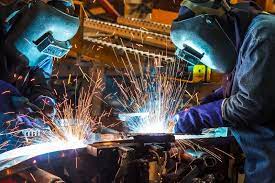
Wielding and fabrication are two essential pillars of modern industry and construction. Whether it’s crafting intricate metalwork, constructing towering skyscrapers, or building the backbone of advanced machinery, wielding and fabrication play a pivotal role. In this blog post, we will delve into the fascinating world of wielding and fabrication, uncovering the skills, techniques, and innovations that shape these fields.
The Craftsmanship of Wielding:
Wielding, the process of joining materials, often metals, by melting them together, has been a fundamental technique for centuries. Today, it remains a cornerstone of construction, manufacturing, and repair work. Here are some key aspects to consider:
- Types of Wielding: There are various wielding techniques, including arc wielding, gas wielding, and spot wielding, each with its unique applications and requirements.
- Precision and Safety: Wielding demands precision and safety. Skilled wielders must meticulously control the temperature, electrical current, and shielding gases to create strong, reliable bonds without compromising safety.
- Industry Applications: Wielding is integral to many industries, from automotive and aerospace to shipbuilding and construction. Explore how wielding contributes to these sectors.
- Wielding Innovations:https://www.uti.edu/blog/welding/fabrication Discover the latest advancements in wielding technology, such as automated wielding robots and improved materials, which enhance efficiency and quality.
Fabrication complements wielding by shaping and assembling raw materials into finished products. It requires not only technical skills but also artistic creativity:
- Materials Expertise: Learn about the various materials used in fabrication, such as steel, aluminum, and plastics, and how their unique properties influence the fabrication process.
- Blueprint Interpretation: Fabricators must interpret intricate blueprints and transform them into tangible products, showcasing the importance of meticulous attention to detail.
- Customization and Prototyping: Explore how fabrication allows for customization, enabling the creation of unique, one-of-a-kind pieces, and how it supports the development of prototypes for new inventions.
- Sustainability: Discover how modern fabrication techniques prioritize sustainability by minimizing waste, recycling materials, and reducing environmental impact.
The Intersection of Wielding and Fabrication:
Wielding and fabrication often intersect, with both processes contributing to the creation of complex structures and products:
- Wielding in Fabrication: Understand how wielding is an integral part of the fabrication process, as it’s used to join and secure various components.
- Challenges and Opportunities: Examine the challenges faced by professionals who work at the intersection of wielding and fabrication, including tight tolerances, complex designs, and the need for precision.
- Career Opportunities: Learn about the diverse career opportunities available in wielding and fabrication, from skilled tradespeople to engineering and design roles.
Wielding and fabrication are timeless skills that continue to shape our world. From constructing the skyscrapers that define our cities to crafting intricate metal artwork that inspires us, the art of wielding and fabrication is as relevant today as it has ever been. As technology evolves, these fields will only become more critical, offering endless opportunities for those who master their craft. Whether you’re a student exploring career options or an industry professional looking to stay updated, wielding and fabrication are bound to be exciting and rewarding areas to explore.
Share this post to your friends:
Leave a Comment